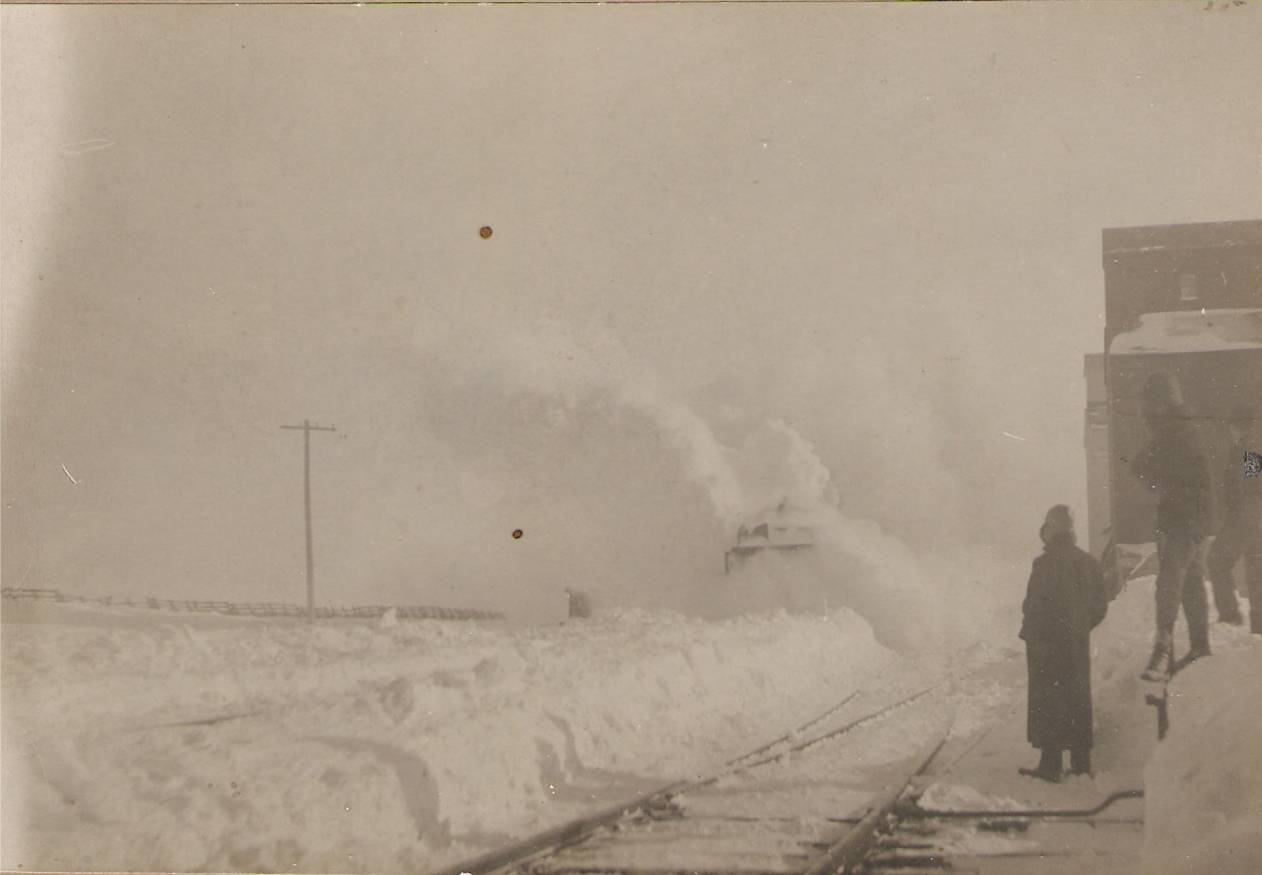A Look Back at
|
||
Now that all the snow of the April 5 th blizzard is gone, I am reminded of a storm that hit Anamoose in 1903. This blizzard was a typical North Dakota storm that lasted several day. While I was writing an English project for Miss Gilmore in the early ‘40s, I interviewed a lot of the elderly citizens of our community. Martin Hublou and Fred Albrecht told me of the terrible 1903 storm. The population of our young city wasn’t too large at that time. In those early years everything the towns along the railroads needed was brought in by train. All of their food, medical supplies, clothing, coal, gas, and such goods were shipped in by the Soo Line Railroad. There were coal shed on the south side of the railroad tracks. The different types of coal were unloaded from the boxcars into the sheds. There were huge silver gas tanks on the south side, too. Gas was pumped into the silver tanks from the Soo tankers. The city was very dependent on the railroad company. When the blizzard hit back then, the city was caught off guard, as the coal sheds were nearly empty. To conserve the fuel they had, the city fathers had several families move together into one house. The coal was, then, gathered from all of the homes and divided among those with inhabitants. Canned goods, flour, sugar and like goods were pooled to share. In many of the homes they had three families living together. I oft times think of that situation when it storms today. When we had that April 4 blizzard, it came with such fury. It was my birthday! I was alone with my three cats. I found myself walking from room to room, window to window, trying to see across the street. No party for me this year. For some reason, I felt so alone. I asked Mr. Albrecht what they did during the storm. Even when the wind subsided, people couldn’t go back to their homes. The snow at that time was so high it blocked the railroad tracks along the Soo Line for miles in many places. No trains could get through to bring the much needed coal and groceries. He told me that the people read passages from the Bible. Some read a bit of poetry. They played records on the victrola. To the young people of the area, that was a stereo without woofers and tweeters. If the homes had a piano or organ, they sang hymns or patriotic songs. Some played cards or checkers. The women had quite a time with the cooking, baking and trying to keep things neat amid all the chaos. They spent a lot of time settling fights among the little ones. They wanted their own toys and their own beds. Martin said it was amazing to him how some women could actually sit down and do some quilting. Night time was a bit traumatic until they got a routine scheduled. They made beds all over. A lot of feather ticks were used back then. They eve used coats and robes to keep warm. The men took turns keeping the fires going during the night. Albrecht mentioned burning flax straw that had been tied into bundles. They, also, burned newspapers that had been tightly rolled. It never occurred to me to ask the men if most people back then had gathered flax straw to burn in the winter. The straw was mixed in the heaters with the coal and wood. The day finally came when the Soo Line snowplow came through. People bundled up, braved the snow banks, and headed for the railroad tracks to watch the great snowplow at work. Of course many stood too close to the tracks and got covered from head to foot. But they cheered anyway. A passenger train followed the plow and brought a carload of coal and half a car filled with groceries and items for the drug store. Mr. Albrecht said what a busy day that was. People shoveling paths to their homes. People carrying gunny sacks full of coal to their homes. Some carried coal home in buckets. The men got the fires started and, very soon, families moved back into their own homes. He said it looked like a migration of sorts with every member of the family carrying clothes, bedding, and food back home. I guess when the times need help and sharing, we can do it once we set our minds to it. It’s being done in the eastern part of our state right now, following the flood. But I do stop and think how well I would have handled living in someone else’s home with some other families. Would they have accepted my cats? One never knows. |
